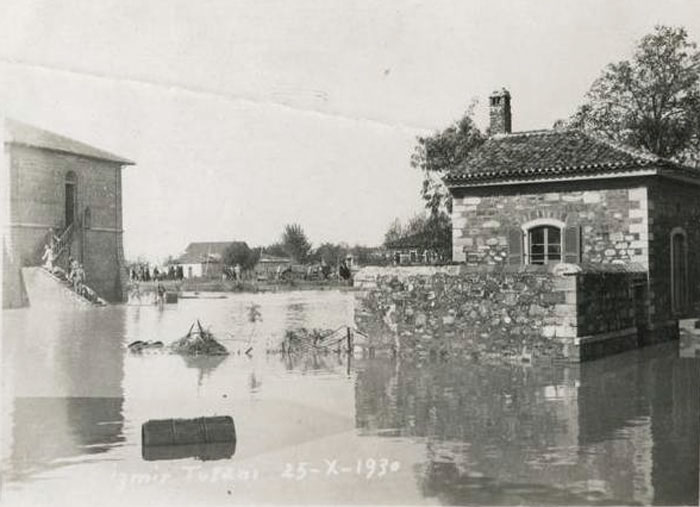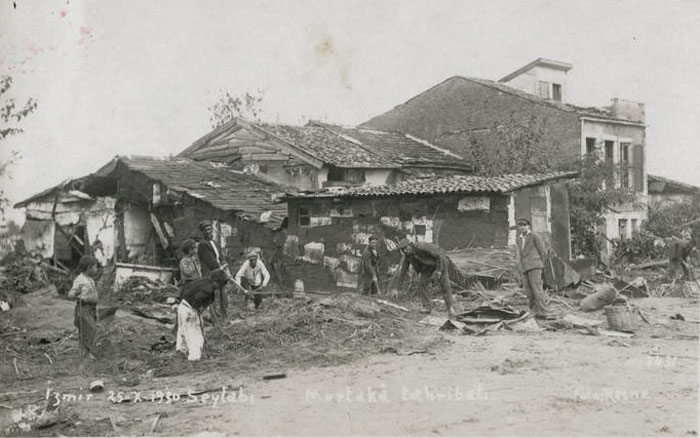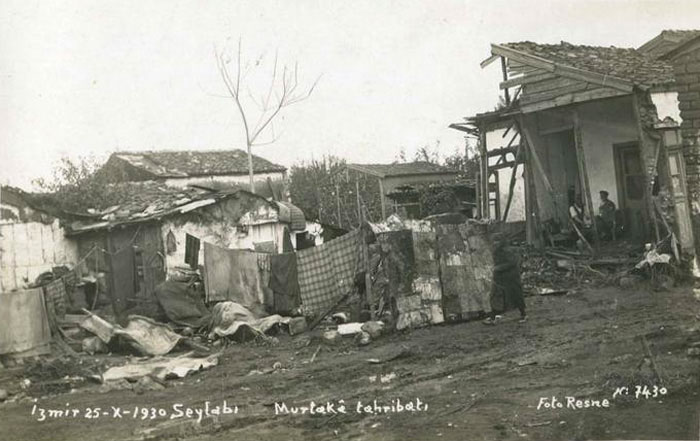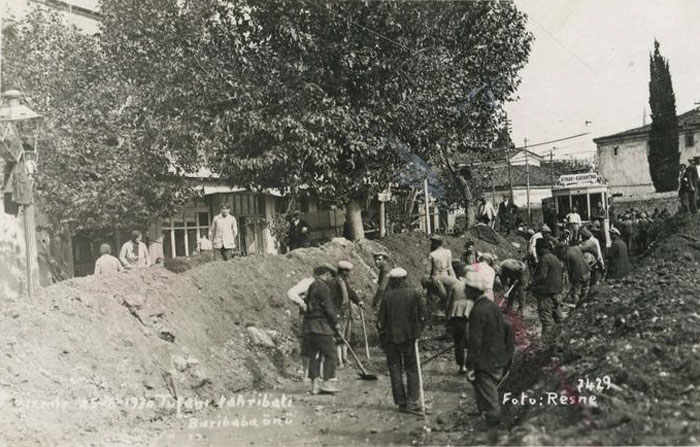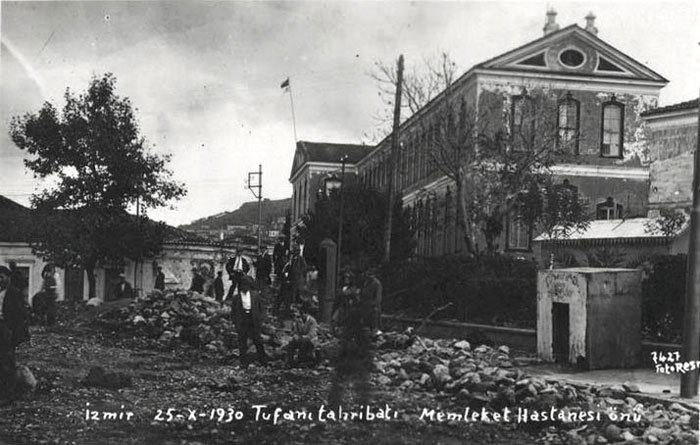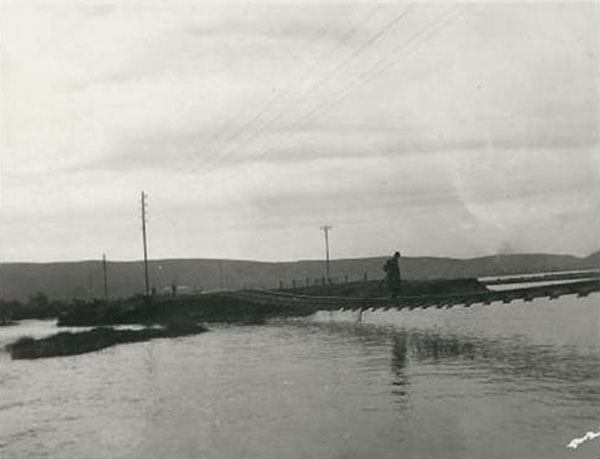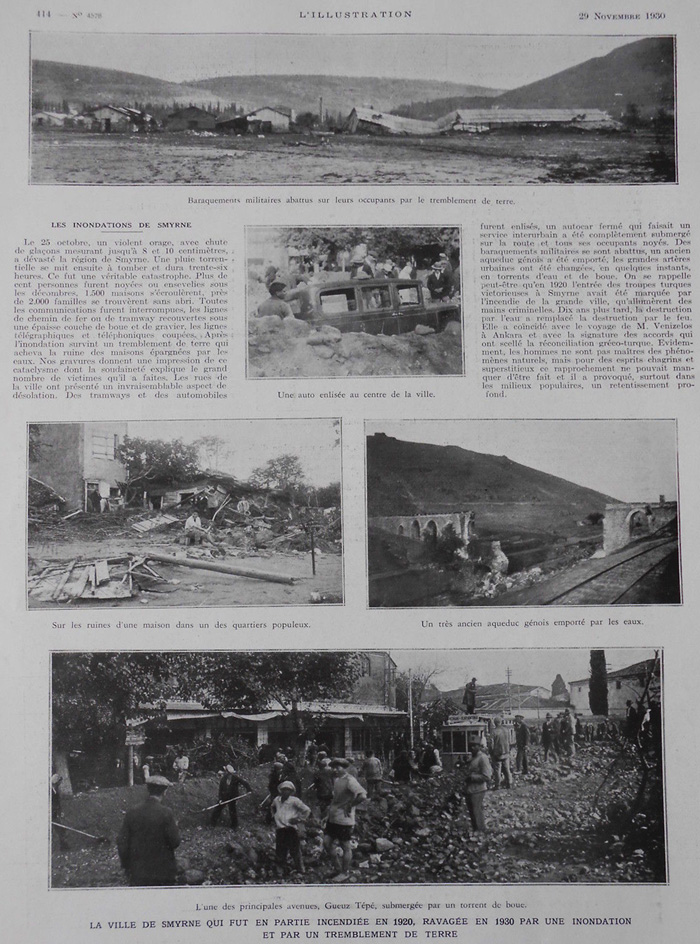View of destruction in the Karantina area.
The 1930 Smyrna flood as narrated by Peter P. Galdies (then 18 years old)
[From his personal notes of childhood to young adult]
… During early October, rains which started in mid-September had developed into storms, the river running down from Seydikoy and Boudja carrying on its wake large amounts of falling trees, branches, and a lot of other waste towards Kemer and the sea had accumulated sufficient quantity of rubbish; enough to block the main gates of the first and second line of arches of the Roman stone and brick aqueduct. The pressure of the water accumulated behind this ancient monument was such that the structure collapsed with a huge noise and tremor giving way to this huge mass of rubbish, stones, and pillars of brick, complete olive and fig trees, together with all types of branches floating on the surface towards the town.
This was too much for the shallow and narrow man-made river to carry the rain waters to the sea at Halkapinar. (This stream or canal was dug at the time when the Quays were built, and was diverting the flow away from the river’s original bed running across town, and potentially towards the new port.)
The waters overflowed and burst the river’s banks and even carried away the fragile wooden bridge, [Karavan Bridge at Kemer?] thus adding even more rubbish and silt. As a result the lower parts of the town were being invaded.
The waters had now reached Bornova Sokak but could not advance further towards the sea because earlier in the year the Municipal Authorities had authorised the reconstruction of the road, lifting it 50 centimetres higher with the intention of making all the roads of the town higher thus using all the rubble of the burnt city. As a consequence most traces of previous civilisations vanished.
It is at this stage therefore that the rain waters accompanied by heavy yellow silt started to rise, filling every gully. When these were full and started to overflow (being lower than the sea level) the waters were now backing into the houses and the temporary dwellings. The waters covered the marble steps one by one, and entered the basements. Soon the streets of Punta (Alsancak) became canals as if it was Venice. People did not realise the danger at first, but by mid-afternoon everything was under water, at places over a metre high.
[then, he goes on narrating that the main power generator had been affected and the whole town was in the dark by night fall, and how he had to rescue his mother bedbound with flu on his back and move her to a neighbour’s 2 storey house. He recalls how their family home, having burnt down in 1922 Catastrophe, they now lived in a provisional house on the original plot awaiting a Foreigners’ Permit to Build.]
[He reports that during the night the walls along the Quays had collapsed and allowed the waters to finally run into the sea].
…the tide being at its highest level the sea was now over the parapet covering the Quay side from one end to the other of the sea front. The French school for girls in the French Hospital grounds had water at desk height and the pupils books were carried away everywhere and books were seen floating away in the sea after the storms subsided. My younger sister found her own books buried under the mud, and we had to wash them under the tap…
News article in the French weekly newspaper published in Paris, ‘L’Illustration’, November 1930.
submission courtesy of George Galdies (son of Peter), 2011 - upper photos from ‘Foto Resne’ were taken by Bahaeddin Bey, grandfather of contributor Yasar Ürük.

